Disclosure: This article contains affiliate links. We may earn a commission from purchases at no extra cost to you, which helps our travel content.
The first time I visited Tulum as a 12-year-old with my parents, I stood awestruck before the clifftop ruins, watching waves crash against limestone as a guide wove tales of Maya astronomers tracking celestial bodies. Two decades and a PhD in Mesoamerican Archaeology later, I've returned to Tulum countless times—but my recent two-week solo journey offered an entirely different perspective. While my professional visits typically involve research teams and academic objectives, traveling alone allowed me to experience this magical coastline through a more personal lens. The fusion of ancient history, vibrant community, and natural beauty creates the perfect backdrop for solo female travelers seeking both adventure and introspection. Whether you're drawn to the enigmatic ruins, the cenotes' crystal waters, or simply the space to reconnect with yourself, Tulum offers a rare balance of safety, community connection, and transformative experiences that make it ideal for women traveling alone.
Safety Considerations for Solo Female Travelers
As both an archaeologist and a woman who frequently travels alone, I've developed a nuanced perspective on safety that balances awareness with openness. Tulum strikes a remarkable balance—offering the infrastructure that makes solo travel comfortable while maintaining authentic cultural connections.
During my recent spring visit, I found Tulum's main tourist areas exceptionally safe, even when walking alone in the evening. The beachfront hotel zone and pueblo (downtown) remain well-lit and populated until late. That said, I still practiced common-sense precautions: I kept digital copies of important documents in my secure travel wallet, shared my itinerary with friends, and used location sharing with family back home.
Public transportation between Tulum pueblo and the beach/ruins is reliable during daylight hours. For evening outings, I budgeted for official taxis rather than attempting the 3-mile walk in darkness. When exploring cenotes or more remote beaches, I joined small group tours or connected with fellow travelers from my accommodation.
What particularly impressed me was the community support network among women travelers. The hostel where I spent my first week hosts a WhatsApp group for solo female guests to coordinate outings. Through this, I met Elena from Spain and Mei from Singapore—archaeology enthusiasts who became my companions for sunrise visits to the ruins before the crowds arrived.
The local attitude toward solo female travelers felt refreshingly respectful. While catcalling exists (as it does worldwide), it was notably less aggressive than in many destinations I've visited. Most interactions with local vendors, guides, and residents were characterized by genuine hospitality rather than harassment.
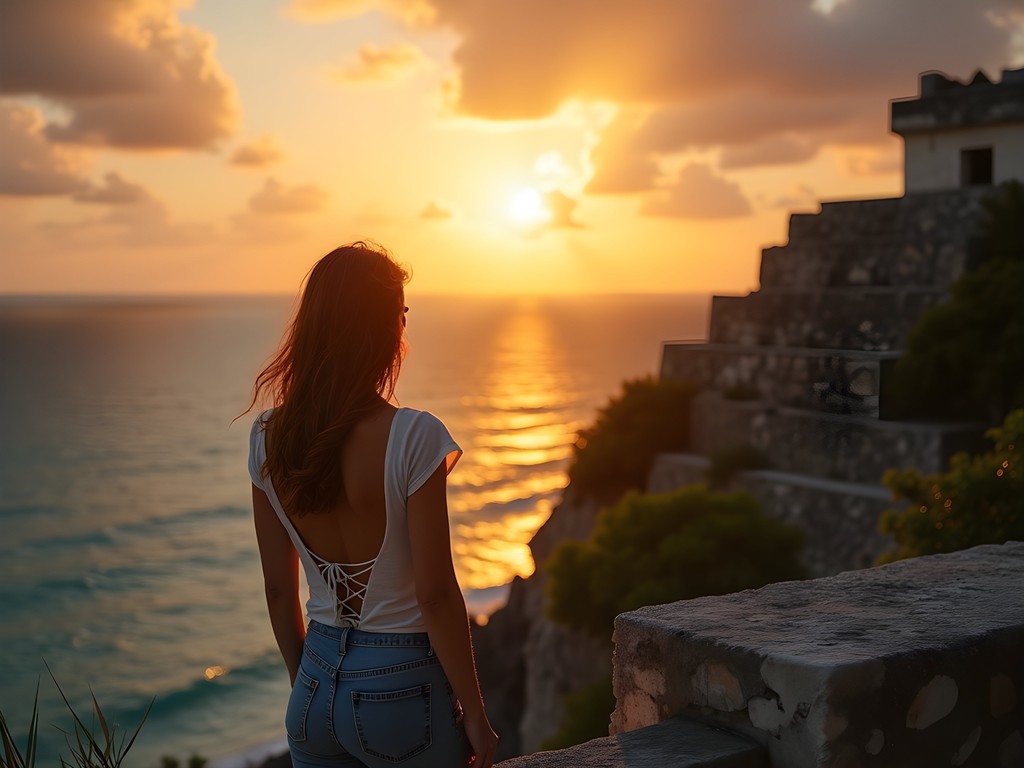
💡 Pro Tips
- Register with your country's embassy upon arrival using their online system
- Use the iOverlander app to find safe routes and areas recommended by other solo travelers
- Consider booking accommodations with 24-hour reception for your first few nights until you get oriented
Finding Your Tulum Community: From Solo to Connected
One misconception about solo travel is that it means being alone. In reality, traveling by yourself often creates more opportunities for meaningful connections than moving in a pre-established group. Tulum exemplifies this paradox beautifully.
My first community touchpoint was my accommodation choice. After extensive research, I split my stay between a social hostel in town (Selina Tulum) for my first week and a smaller eco-lodge near the beach for my second. This combination provided both instant community and peaceful reflection time.
The hostel organized nightly events—from cooking classes featuring Yucatecan specialties to cenote trips—that naturally facilitated connections. During a mezcal tasting, I bonded with Sophia, a digital nomad from Berlin working remotely, who introduced me to her favorite wifi café (Babel Café) where I could upload field notes and photos using my portable power bank during occasional power outages.
For deeper cultural immersion, I participated in a traditional Maya cooking workshop in the nearby village of Chanchen, arranged through the sustainable tourism cooperative Yokolito. Our small group learned to prepare cochinita pibil (slow-roasted pork) in an underground pit oven while our host family shared stories about how their ancestors' culinary traditions connect to archaeological evidence I've studied professionally.
Tulum's wellness community also provides ready-made connections. Whether joining morning beach yoga sessions or attending cacao ceremonies, these gatherings attract thoughtful travelers seeking meaningful experiences. At Holistika's sound healing event, I met three solo female travelers who became my impromptu dinner group for the remainder of my stay.
Perhaps most valuable were the connections with local knowledge-keepers. Through a friend's introduction, I spent an afternoon with Don Miguel, a Maya elder whose family has lived in the region for generations. His perspectives on how modern tourism interacts with ancestral sites offered insights I couldn't have gained from academic texts alone.

💡 Pro Tips
- Join free walking tours on your first day to meet other solo travelers with similar interests
- Look for accommodations with communal kitchens or dining areas
- Consider booking one small-group activity for each segment of your trip to establish a social network
Archaeological Treasures Through a Solo Traveler's Lens
While Tulum's archaeological zone draws thousands of visitors daily, experiencing these ancient spaces as a solo traveler—especially one with archaeological training—offers unique perspectives impossible to access in groups.
The coastal Maya site of Tulum operated primarily during the Late Postclassic period (1200-1450 CE) as both a ceremonial center and trading port. What many guided tours miss is how the site's architecture reveals sophisticated understanding of celestial alignments. Visiting at sunrise allowed me to observe how the morning light enters specific structures through carefully positioned windows—astronomical knowledge encoded in stone.
To truly appreciate Tulum's archaeological significance, I recommend visiting twice: once with a knowledgeable guide to understand the basic context, then again alone, equipped with a good archaeological guidebook to explore at your own pace. During my solo visit, I spent nearly two hours sketching El Castillo's intricate facade details that tour groups typically bypass in minutes.
For those seeking deeper archaeological experiences, the nearby sites of Muyil and Cobá offer fewer crowds and more immersive forest settings. At Cobá, climbing Nohoch Mul pyramid (one of the few Maya structures still open for climbing) provides both spectacular views and a visceral connection to ancient spatial perspectives.
One of my most meaningful experiences came through connecting with local archaeologists. Through professional contacts, I arranged to meet with Mariana, a Mexican archaeologist working on conservation projects at Tulum. Our conversation about gendered spaces within Maya urban planning evolved into an impromptu mini-tour highlighting evidence of women's economic roles rarely mentioned in standard presentations.
As a solo female traveler with research interests, I found site staff remarkably accommodating when I explained my background and specific questions. This openness created opportunities to access perspectives and sometimes even areas not available to larger groups.

💡 Pro Tips
- Visit major sites like Tulum ruins at opening time (8am) to experience them before cruise ship crowds arrive
- Bring a small notebook for sketching or observations—this often leads to conversations with knowledgeable staff
- Download the Archaeological Map of Mexico app for detailed site information beyond what's on posted signs
Cenotes: Sacred Waters and Self-Discovery
No visit to the Yucatán Peninsula would be complete without experiencing its most magical natural features: cenotes, the freshwater sinkholes formed when limestone bedrock collapses to expose groundwater. Beyond their refreshing appeal to swimmers, these features held profound spiritual significance for ancient Maya peoples as portals to Xibalba (the underworld) and sources of life-giving water.
As a solo female traveler, cenote exploration presents both opportunities and considerations. The most accessible cenotes (Gran Cenote, Cenote Calavera) have established infrastructure including changing facilities, lifeguards, and regular transportation. For these popular spots, arriving early (before 9am) transforms the experience from crowded swimming hole to mystical sanctuary.
For more adventurous exploration, the Casa Cenote area offers a network of less-visited sites. Here, I joined a small-group kayaking tour that provided safety in numbers while accessing cenotes unreachable by larger tours. Our guide, Luis, shared both scientific explanations of the peninsula's hydrology and traditional stories about guardian spirits believed to inhabit specific pools.
One of my most profound experiences came at Cenote Dos Ojos during a solo early morning visit. Floating in the crystal-clear water, watching light beams pierce the darkness through ceiling openings, I experienced a moment of perfect stillness that connected me to thousands of years of human reverence for these spaces. My underwater camera captured the ethereal blue luminescence that words struggle to describe.
For female travelers concerned about safety while swimming, I found the guided cenote tours by Kay Tours particularly attentive to women's needs—providing private changing areas and maintaining respectful environments. Solo visitors should note that some remote cenotes have minimal facilities, so wearing swimwear under clothes and bringing a quick-dry travel towel simplifies logistics.
Beyond their beauty, cenotes offer something uniquely valuable to solo travelers: spaces for reflection. In these ancient waters, suspended between earth and sky, I found moments of clarity about research questions that had eluded me for months and personal decisions that seemed suddenly obvious in this liminal space.

💡 Pro Tips
- Book cenote visits that include transportation if you're not renting a car
- Bring biodegradable sunscreen only—regular sunscreen damages the fragile cenote ecosystems
- Consider visiting cenotes on weekdays when local families are less likely to be there in large groups
Digital Nomad Havens: Balancing Work and Exploration
While my two weeks in Tulum were primarily personal exploration, my research position occasionally required checking in with colleagues in Tokyo. This necessity introduced me to Tulum's flourishing digital nomad scene—a community that has transformed the town's café culture and created spaces particularly welcoming to solo female travelers.
Tulum pueblo (downtown) hosts several wifi cafés that balance productivity with atmospheric charm. My favorite became Babel Café, where the garden seating area provided reliable internet alongside excellent locally-sourced coffee. The predominantly female staff created a noticeably comfortable environment for women working alone, and the communal tables naturally facilitated conversations with other remote workers.
For those needing more structured workspaces, coworking options have multiplied in recent years. Digital Jungle offers day passes with reliable internet, printing services, and ergonomic seating—luxuries appreciated after hours hunched over field notes. Their women's networking events every Thursday became highlights of my stay, connecting me with female entrepreneurs and remote workers from across the globe.
The beachside Digital Nomad Retreat combines workspace with wellness, offering morning yoga before workday begins. Though pricier than pueblo options, the ability to take swimming breaks between research sessions justified the splurge for two memorable workdays.
Tulum's digital infrastructure reflects its transitional status—more developed than many Mexican destinations but still with occasional challenges. Power outages occur, particularly during stormy weather, making a portable power bank essential for deadline-sensitive work. Most accommodations now offer backup generators, but it's worth confirming this if your stay requires consistent connectivity.
Perhaps most valuable was discovering how these digital nomad spaces create natural community for solo travelers. My conversation with Lisa, a UX designer from Montreal working remotely, began with sharing a power outlet and evolved into sharing a sunset sailing excursion. The digital nomad community's inherent openness to connection creates ready-made social networks for women traveling alone.

💡 Pro Tips
- Download offline Google Maps of Tulum before arrival—they're invaluable during connectivity issues
- Consider purchasing a local SIM card (Telcel has the best coverage) as backup for accommodation wifi
- Join the 'Tulum Digital Nomads' Facebook group before arrival for current recommendations and potential meetups
Sustainable Choices: Traveling Responsibly in a Fragile Ecosystem
As an archaeologist who studies human impact on landscapes across centuries, I'm acutely aware of how modern tourism affects Tulum's delicate balance between development and preservation. The region's rapid growth presents both challenges and opportunities for travelers seeking to minimize their footprint.
Tulum's freshwater systems—including its famous cenotes—connect through underground rivers to the Caribbean Sea. This means our choices directly impact both freshwater and marine ecosystems. I prioritized accommodations with proper wastewater treatment systems, like Alaya Tulum and Coco Tulum, which have invested in advanced filtration technologies despite their higher operational costs.
Transportation choices significantly affect your environmental impact. Rather than renting a car, I primarily used Tulum's expanding bicycle network. Many accommodations offer free or low-cost bike rentals, and the flat terrain makes cycling accessible even for occasional riders. For longer journeys to cenotes or neighboring communities, colectivos (shared vans) provide low-emission alternatives to private taxis.
Sustainable food choices create opportunities to support local communities while reducing carbon footprints. Tulum's farm-to-table movement has flourished, with restaurants like Hartwood and Kitchen Table sourcing ingredients from Maya communities practicing traditional milpa agriculture. These ancient farming systems—which I've studied archaeologically—represent sophisticated sustainable practices developed over millennia.
When purchasing souvenirs, I sought artisans selling directly rather than through multiple intermediaries. The women's cooperative near the Tulum archaeological site entrance offers textiles made using techniques documented in pre-Columbian Maya art. My favorite purchase was a hand-embroidered blouse from Doña Josefina, whose family has maintained specific stitching patterns for generations.
Water conservation remains critical in this drought-prone region. I carried a reusable water bottle with built-in purification—eliminating the need for single-use plastics while ensuring safe hydration. Most restaurants and many public spaces now offer filtered water refill stations, a positive development from my earlier visits.
Perhaps most important is choosing tours and experiences run by operators with demonstrated commitments to sustainability. Community Tours Sian Ka'an employs local Maya guides and invests proceeds in conservation efforts within the biosphere reserve—creating economic incentives to protect rather than exploit natural resources.

💡 Pro Tips
- Use only reef-safe, biodegradable sunscreen and personal care products
- Choose locally-owned accommodations over international chains when possible
- Consider carbon offsetting your flights through verified programs like Gold Standard
Final Thoughts
As my two weeks in Tulum drew to a close, I found myself sitting on the beach at sunset, watching pelicans dive into waters once navigated by Maya trading canoes. The journey had offered something I hadn't fully anticipated: a perfect balance between solitude and connection, between my professional understanding of this landscape and my personal experience within it. For female travelers considering their first solo adventure, Tulum provides an ideal gateway—safe enough to build confidence, culturally rich enough to transform perspectives, and socially fluid enough to move between independence and community as needed. The ancient Maya believed certain places held sacred energy—portals between worlds where transformation became possible. Whether viewed through archaeological evidence or personal experience, Tulum remains such a place: a threshold between who we were and who we might become. I invite you to discover your own path through this remarkable landscape, where ancient wisdom and modern community create space for women to travel both outward across geography and inward toward self-discovery.
✨ Key Takeaways
- Solo female travel in Tulum offers an accessible balance of safety and adventure
- Connecting with both fellow travelers and local knowledge-keepers creates the richest experience
- Visiting archaeological sites independently allows for deeper personal connection with ancient spaces
- Sustainable choices help preserve Tulum's fragile ecosystem for future generations
📋 Practical Information
Best Time to Visit
February to April (dry season with moderate temperatures)
Budget Estimate
$75-150 per day (mid-range accommodations, local meals, occasional tours)
Recommended Duration
10-14 days for comprehensive experience
Difficulty Level
Intermediate

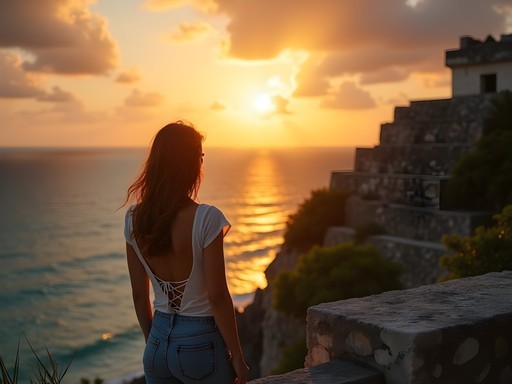
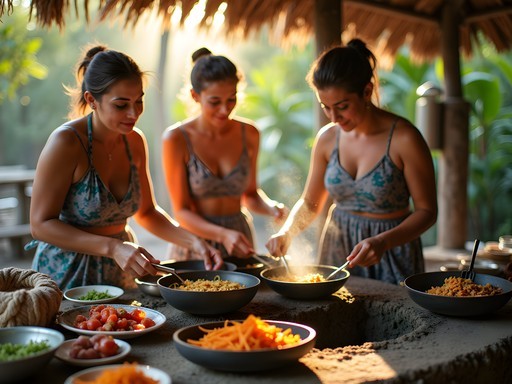
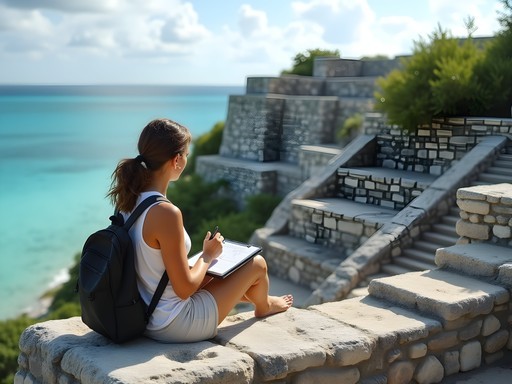






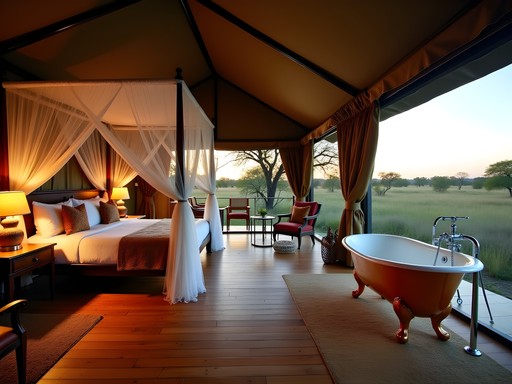
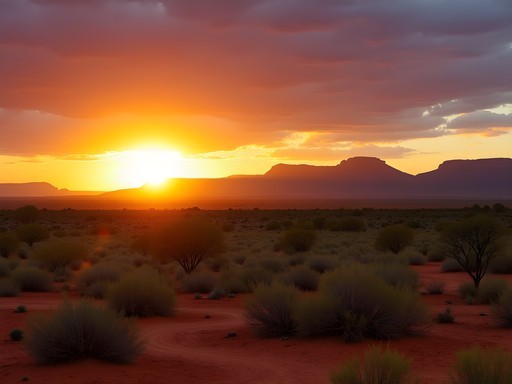


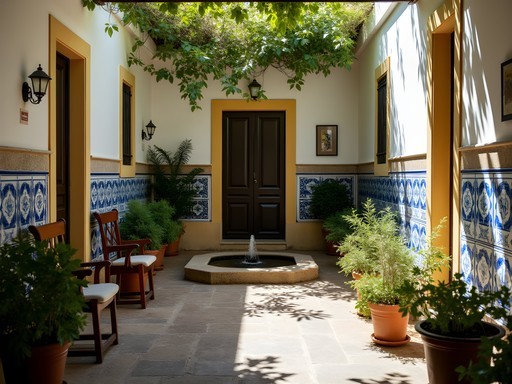
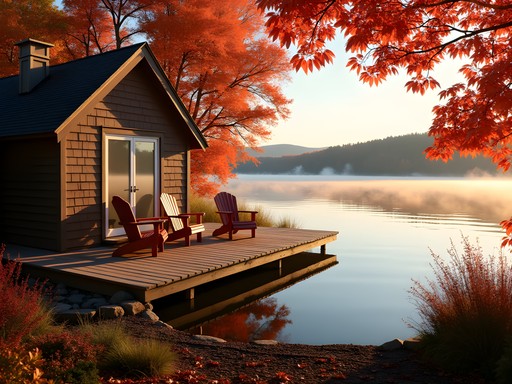
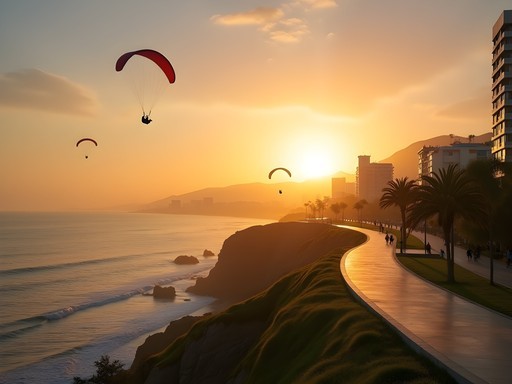
Comments
skylover
Your photos are stunning! Especially the one of the cenote with sunlight streaming in. What camera do you use?
Ana Robinson
Thank you! Most were taken with my iPhone 15 Pro, but the cenote shots were with a GoPro Hero 11 - essential for those underwater moments!
Claire Hawkins
Ana, thank you for this thoughtful guide! While I usually travel with my family, I took a solo trip to Tulum last spring and can confirm many of your observations. For community building, I'd add that the Thursday night art walk in Tulum town was where I met most of my travel buddies. Also, for solo female travelers concerned about safety, I found my personal alarm gave me peace of mind when walking back to my accommodation after dinner. One tip to add: many accommodations offer free bicycle rentals, which was my preferred way to get around and felt safer than walking in some areas at night.
Ana Robinson
Thanks for the art walk tip, Claire! I completely missed that. And yes to bicycles - such a fun way to explore the beach road!
hikingace
Great post! Which cenotes would you recommend for someone who's a bit claustrophobic but still wants the experience?
Ana Robinson
Great question! I'd recommend Gran Cenote or Cenote Azul - both have open areas with plenty of space and natural light. Avoid Casa Cenote if you're claustrophobic, as parts of it are in cave systems with narrow passages.
happyhero
Just booked my trip after reading this! Those cenotes look AMAZING 😍
skylover
The cenotes are definitely worth it! Gran Cenote was my favorite when I visited last year.
Amit Sullivan
Ana, your description of watching the sunset at those Mayan ruins took me right back to my visit last year. I'm a bit older (57) and traveled solo as well, though obviously with different concerns than a female traveler. I found the archaeological site most magical in early morning - arrived at opening and had nearly an hour before the tour buses. The local guide I hired (Miguel from Tulum Historical Tours) shared incredible knowledge about astronomical alignments I'd have completely missed otherwise. For anyone visiting, don't skip the less-visited ruins at Muyil - just 20 minutes south and practically empty most days!
travelstar
This is so inspiring! I'm planning my first solo trip to Tulum in November. Did you feel safe walking around town at night? Also wondering about transportation from Cancun airport?
Ana Robinson
Thanks! I felt quite safe in the main areas at night, but always took standard precautions - stayed aware, avoided isolated streets, and used official taxis. For airport transport, I pre-booked a shuttle. Much less hassle than negotiating at the airport!
travelstar
Thanks so much for the quick reply! Will definitely book a shuttle ahead of time.
mexicopassion
The photo of you at the ruins is stunning! Perfect lighting. Did you go at sunrise?
Ana Robinson
Thank you! Yes, I got there right when they opened at 8am. Worth the early wake-up call to beat both the heat and crowds!
beachlife365
Did you feel safe walking around town at night? That's my biggest concern as a solo traveler.
Ana Robinson
Great question! I felt safe in the main tourist areas and beach road until about 10pm. After that, I always took taxis. The pueblo (town center) was fine during day but I didn't wander there alone late night. Trust your instincts!
beachlife365
That's super helpful, thanks! 🙏
wanderlust_jamie
Love this! Your safety tips are gold. Saving for my trip in December!
Haley Hamilton
Ana, your description of sitting on that beach at sunset watching pelicans took me right back to my own solo trip to Tulum last year! I had such a similar experience of transformation there. The way you captured the balance between safety awareness and still embracing adventure is spot on. One thing I'd add for other solo female travelers - I found the colectivos (shared vans) between Tulum and Playa del Carmen to be super safe and crazy affordable. Just bring a portable fan because they get HOT in summer months! Did you make it to Cenote Calavera? It's less visited and became my personal meditation spot during my stay. Those moments of solitude between the group tours were pure magic.
Ana Robinson
Haley, thank you for that beautiful comment! Yes to colectivos - such a great tip for budget travelers. And Cenote Calavera was actually my favorite! That little jump through the 'eye socket' hole was terrifying but so worth it. Did you try the rope swing?
Haley Hamilton
I did! Took me three tries to actually let go of the rope 😂 But that moment of flying through the air and plunging into that crystal water... pure magic. Worth every second of fear!
Venture X
Premium card with 2X miles, $300 travel credit, Priority Pass